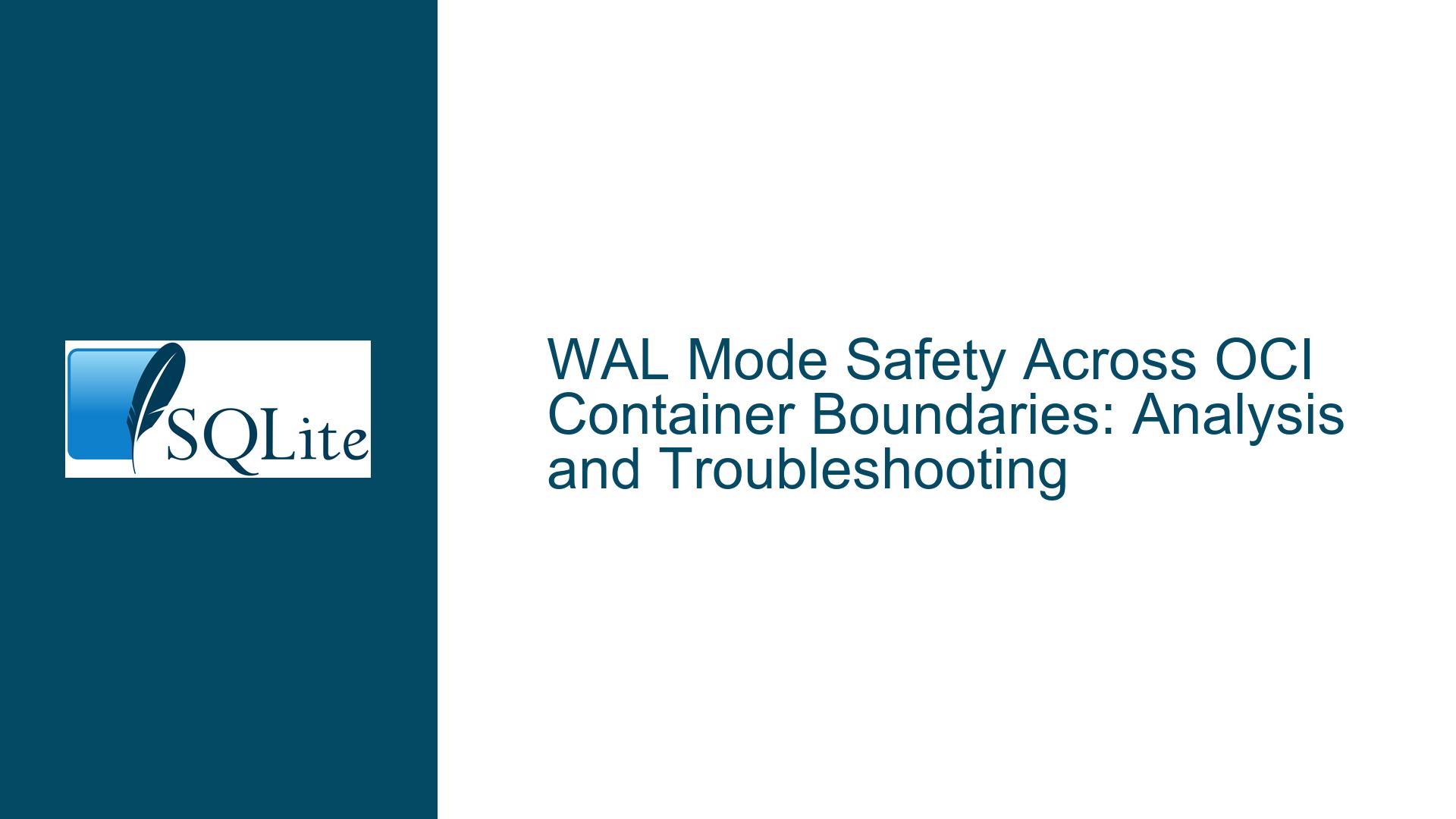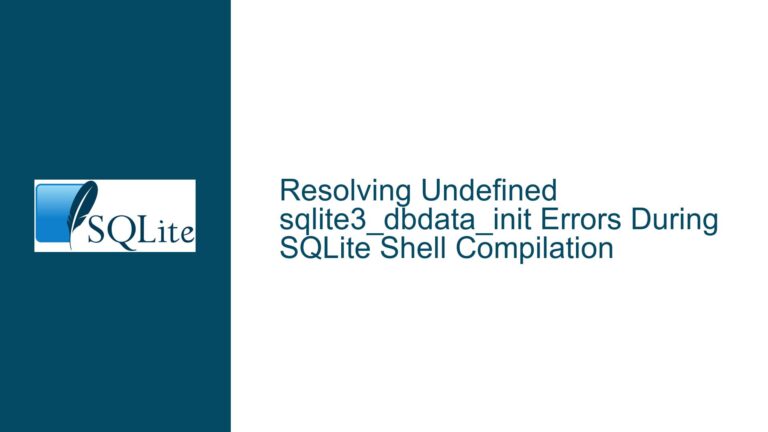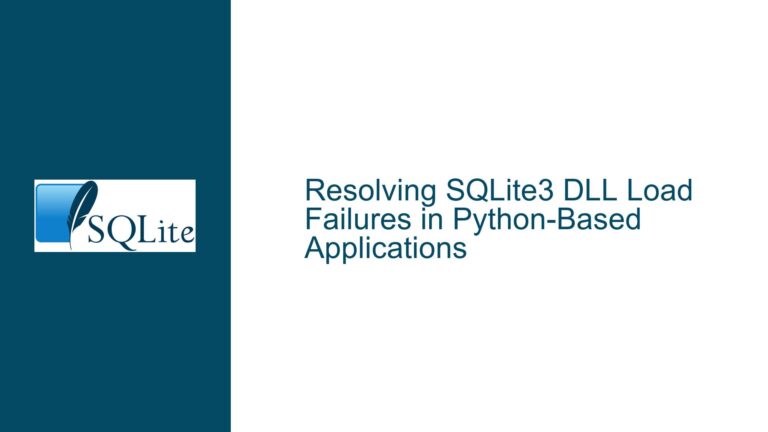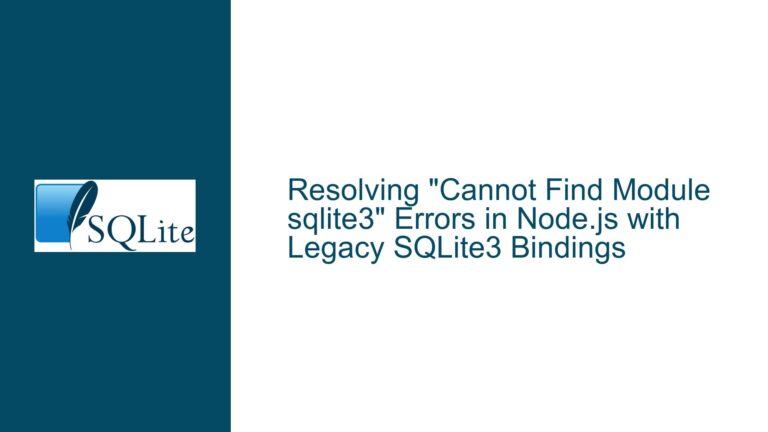WAL Mode Safety Across OCI Container Boundaries: Analysis and Troubleshooting
Understanding WAL Mode and OCI Container Boundaries
The Write-Ahead Logging (WAL) mode in SQLite is a popular feature that enhances concurrency and performance by allowing multiple readers and a single writer to operate on the database simultaneously. However, the safety and reliability of WAL mode across Open Container Initiative (OCI) container boundaries have been a topic of debate. OCI containers, such as those managed by Docker or Kubernetes, provide isolated environments for running applications, but this isolation can introduce complexities when shared resources like databases are involved.
The core issue revolves around whether WAL mode can reliably function when the SQLite database is accessed from multiple containers, especially under high concurrency and stress conditions. The concern is that the shared nature of the WAL file and the underlying storage might lead to inconsistencies or corruption if the containers do not properly coordinate their access to the database.
Potential Causes of WAL Mode Failures Across Containers
Several factors could contribute to WAL mode failures when SQLite databases are accessed across OCI container boundaries. These include:
Shared Memory and File System Coordination: WAL mode relies on shared memory and file system coordination to manage concurrent access. If containers are not properly configured to share these resources, it could lead to race conditions or inconsistent states.
File Locking Mechanisms: SQLite uses file locking to manage concurrent access to the database. In a containerized environment, the effectiveness of these locking mechanisms can be compromised if the underlying file system does not support them correctly or if the containers are not configured to respect these locks.
Networked Storage Latency and Reliability: When the database is stored on networked storage (e.g., NFS, Ceph), latency and reliability issues can exacerbate the challenges of maintaining consistency across containers. Network delays or interruptions could lead to incomplete writes or stale reads.
Container Orchestration and Resource Management: Container orchestration tools like Kubernetes might dynamically allocate resources, restart containers, or scale instances. These actions can disrupt the normal operation of WAL mode, especially if the database is not designed to handle frequent restarts or reconnections.
Chaos Testing and Edge Cases: Stress testing with tools like Harvey the WAL-Banger can reveal edge cases where WAL mode fails. For example, killing random container instances (chaos monkey testing) might force WAL log replays and restarts, exposing weaknesses in the database’s ability to recover gracefully.
Troubleshooting WAL Mode Issues in Containerized Environments
To address the potential causes of WAL mode failures across OCI container boundaries, the following troubleshooting steps, solutions, and fixes can be implemented:
Validate Shared Memory and File System Configuration: Ensure that the containers are correctly configured to share memory and file system resources. This includes verifying that the underlying storage supports the necessary features for WAL mode, such as atomic writes and reliable file locking. If using networked storage, confirm that it provides the required consistency guarantees.
Test File Locking Mechanisms: Conduct thorough testing to verify that file locking works as expected across containers. This can be done by simulating high-concurrency scenarios and monitoring for any locking-related issues. If problems are detected, consider using a different file system or storage backend that better supports SQLite’s locking requirements.
Optimize Networked Storage Performance: If the database is stored on networked storage, optimize the network configuration to minimize latency and maximize reliability. This might involve tuning network parameters, using high-performance storage solutions, or implementing redundancy to mitigate the impact of network failures.
Implement Robust Container Orchestration Strategies: Work with container orchestration tools to ensure that database access is managed effectively. This includes configuring resource limits, implementing health checks, and designing the system to handle container restarts gracefully. Consider using stateful sets or persistent volumes to maintain database consistency across container restarts.
Conduct Comprehensive Chaos Testing: Use tools like Harvey the WAL-Banger to simulate extreme conditions and identify potential failure points. Adjust the test parameters to create more write-heavy workloads, disable shared memory syscalls, or introduce other constraints that mimic real-world scenarios. Analyze the results to identify weaknesses and implement fixes to improve resilience.
Monitor and Analyze Logs: Enable detailed logging in SQLite and the container environment to capture information about database operations, file system interactions, and container behavior. Use this data to diagnose issues and identify patterns that could indicate underlying problems.
Consider Alternative Database Modes or Solutions: If WAL mode proves to be unreliable in a specific containerized environment, consider using a different SQLite journaling mode or exploring alternative database solutions that are better suited to the use case. For example, some applications might benefit from using a client-server database system that is designed for high concurrency and distributed environments.
By systematically addressing these potential causes and implementing the corresponding solutions, it is possible to improve the reliability of WAL mode across OCI container boundaries. However, it is important to recognize that no solution is foolproof, and ongoing testing and monitoring are essential to maintaining database integrity in dynamic and complex environments.






